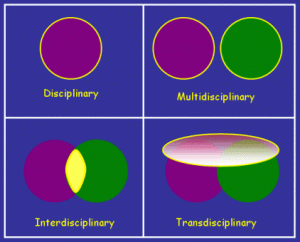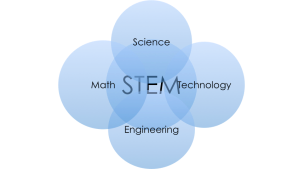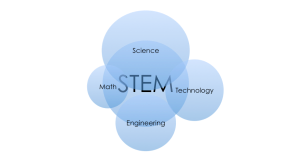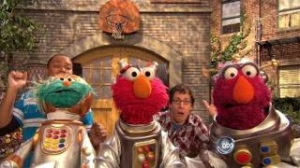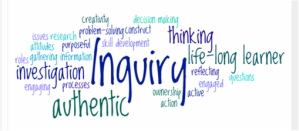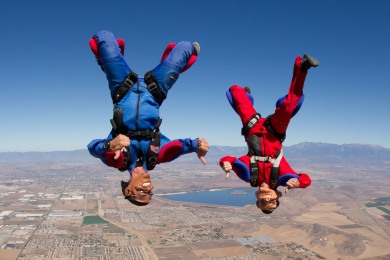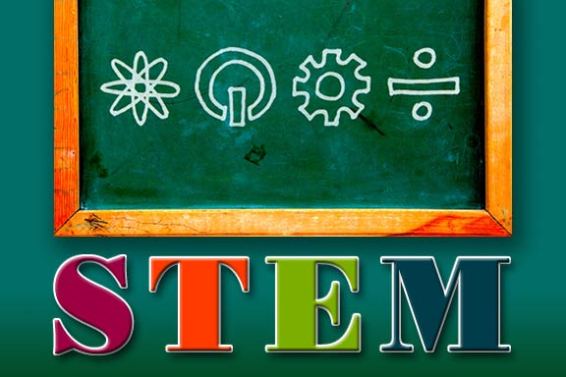After reading chapter 9 in How Students Learn by Donovan and Bransford, I was asked to respond to two questions that were formed from class discussions and responses from classmates. Below are the two questions I responded to regarding the chapter …
5) On page 411, Magnusson and Palincsar are quoted as saying, “Engaging children in science, then, means engaging them in a whole new approach to questioning….lt means questioning the typical assurance we feel from evidence that confirms our prior beliefs, and asking in what ways the evidence is incomplete and may be countered by additional evidence.”
How does traditional science teaching support or conflict with the approach to science described in this quote? How do Donovan and Bransford connect this approach to science to the third Principle: Metacognition? Choose a concept typically taught at your grade level. Describe a pedagogical strategy for leveraging the type of questioning described in the above quote toward productive learning.
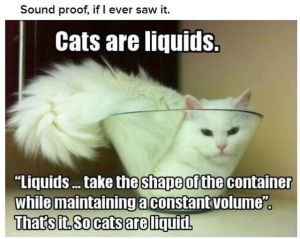
Image Source: http://www.funii.com/gallery/tag/Science
When I began reading this quote, I immediately thought of the new curriculum being implemented in elementary schools across Montgomery County. Much of the new curriculum uses this type of questioning. It requires students to dig deeper and explain the “why” part of what their learning about. So when I think of “traditional” science, I think of how I was taught science, in middle and high school. I think teaching methods are slowing moving away from the “traditional” ways.
With that said, I think traditional science teaching conflicts with this approach to science described in this quote. I remember science being very content and theory based, a lot of lecturing, note taking and reading response. The questions we were asked were simple recall questions. Recalling what was taught the previous day, or recalling a formula used to figure something out. I don’t ever remember being asked the “how” and the “why” to theories and content. This quote talks about going beyond that type of questioning and asking deeper questions. What I like most about this quote is that it doesn’t dismiss those basic types of questions. Magnusson and Palincsar still value the importance of basic factual questions and believe questions should be built on top of those to truly deepen understanding. I think it’s important to not completely bash and get rid of the traditional ways of teaching science, but instead find ways to improve and build upon it like a stepping-stone.
Donovan and Bransford connected the approach by discussing different types of studies that were conducted using the science approach described in the quote. Two people named White and Frederiksen, designed a “reflective assessment” (Donovan & Bransford, 2005, pg. 412) for students, was the first study talked about by Donovan and Bransford. According to box 9-5 on page 412, “The assessment categories included understanding the main ideas, understanding the inquiry process, being inventive, being systematic, reasoning carefully, applying the tools of research, using teamwork, and communicating well.” Students using this assessment were compared with another set of students who were not given a guiding framework. Although there were no gains in either group on standardized testing, the group that was given the reflective assessment showed a greater and deeper understanding in both physics and science inquiry. I think the key word here is “reflective” because being a reflective learner means understanding what you’re being taught and applying it to other aspects of learning not just being able to recall the information.
While the previous assessment was used on inner city and suburban schools, the next study mentioned by Donovan and Bransford was conducted on college students. Lin and Lehman did this experiment, and they required students to learn about strategies for controlling variables. Their experiment required students to “ reflect on—and briefly explain—what they were doing and why.” (Donovan & Bransford, 2005, pg. 407) This study truly supports the importance of application after being taught science in the classroom. Lin and Lehman found that students in the control group, who were not being asked to reflect and explain, were not able to transfer their newly learned knowledge to new problems.
Both of these studies discussed by Donovan and Bransford support the quote by Magnusson and Palincsar about questioning students in science. Just by looking at these two studies it is obvious how important the higher level questions are to student understanding within a concept. Not only do these questions require students to be reflective, but it also forces them to think about and look at the concepts in a different way so application can be made outside the classroom.
Again, this quote makes me think of the new elementary curriculum being implemented across Montgomery County. There is much value in asking students questions about “how” and “why” they know something. This is very apparent in the new curriculum. Much of what is being taught across content is being followed up with these types of questions. However in kindergarten, we spend a lot of time in science talking about basic needs to seeds and plants. Typically, we read books about basic needs, watch videos and eventually grow our own plants. With the new curriculum, students are highly involved in whole group and small group discussions on what they think plants will need and how they know that. A lot of these discussions are based off prior understandings and knowledge. When we start to actually grow plants we usually give every student a seed with the things they need to make a small pot. They receive soil, seeds and water to grow a plant. I think one way to make this topic link more with the quote is to have students experiment with growing seeds that are missing things they need in order to survive. Students could experiment with this idea by not watering or using soil with some seeds. Some students could even experiment with different places in the classroom that have a lot, little or no sun light. I think allowing students to experiment with their own questions and “what if’s” is important for deeper and more meaningful discussions. I know in the past, some seeds that are given all things for survival still don’t sprout and some seeds do sprout when their basic needs are taken away. Students have questions about this and instead of moving on and telling students “it was a bad seed” we can foster this and explores why this might have happened.
6) On page 403 Donovan and Bransford describe the value Einstein placed on imagination for scientific advancement. (A quote commonly attributed to Einstein states, “Imagination is more important than knowledge. For knowledge is limited to all we now know and understand, while imagination embraces the entire world, and all there ever will be to know and understand.”)
To what extent is imagination used as a tool in traditional science lessons, particularly those that begin with a specific end-goal in mind? What role does imagination play in the approach to science inquiry that Donovan and Bransford advocate? Chose a concept typically taught at your grade level. Describe a pedagogical strategy for incorporating student imagination and creativity into constructing knowledge about that concept.
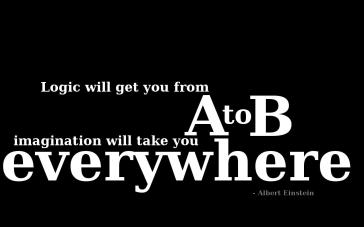
Image Source: http://dracus.wordpress.com/2011/02/09/imagination-is-a-power-you-cannot-imagine/
Imagination is not used as a tool in “traditional” science lessons. I think Donovan and Bransford made that quite clear in the beginning of the chapter. “To know science meant to know the definitions of scientific terms and important discoveries of the past. … To be good at science meant to reproduce such information as accurately and completely as possible.” (Donovan & Bransford, 2005, pg. 397) The authors talk a lot about how in traditional science the inquiry process is seen as a separate entity in classrooms. You learn a bunch of information about things scientists have found out and then you’re given a formal for testing a theory. Step by step directions on how to perform an experiment or task. There’s no imagination being used in this type of teaching. Teachers are expected to meet a certain objective and it’s their job to make sure students get there. Sometimes this diminishes imagination because so much has to be covered in a limited amount of time.
The following quote was one of my favorites from the reading, “If students are not helped to experience this for themselves, science can seem dry and highly mechanical.” (Donovan and Bradsford,406) This quote took me back to high school science class days. I hated science classes! All I really remember doing was taking extensive notes on formulas and conducting an experiment that wasn’t even fun every once in a while. It was mostly listening to a teacher lecture at the front of the room. I remembered being very bored and not engaged during these classes. I even recall trying to pick partners in my class that were “good” at science when it came time for lab groups because I never really enjoyed doing the labs/experiments. You were always given a set of directions to follow and if you messed up one little step then your entire experiment was thrown off and wrong. There went your grade for that experiment! Following a recipe for experiments doesn’t involve any sort of imagination; in fact it actually caused me stress because I was so worried about following them correctly. I didn’t actually understand what I was doing because I was only following what was on the paper in front of me. I had the end goal in mind and I didn’t care how I got there I just wanted to make sure it looked like the end product that was on the paper in front of me.
Donovan and Bransfords approach to science inquiry requires much more imagination and creativity from students. The author’s state, “They do not involve simply setting aside “inquiry time” during which students conduct experiments that are related in some way to the content they are learning.” (Donovan & Bransford, 2005, pg 405) The authors approach is more focused on the idea of researching to figure out an answer or problem instead of assigning work that students find no interest or value in. Their approach is also viewed more of as a process instead of individual sections you learn about throughout the year. Learning is much more of a fluid process verses skipping around the content I had this feeling a lot in high school. Starting a new topic one week and moving on to something completely different the next week and thinking about how I could ever remember what I just learned for the final exam at the end of the semester. In Donovan and Bransford’s type of teaching students have a say in what they want to learn about and therefore enjoy and take so much more from the content. “If students are not helped to experience this for themselves, science can seem dry and highly mechanical.” (Donovan & Bransford, 2005, pg. 406)
As a third year kindergarten teacher, I came into the county using the new Montgomery County curriculum. So all three year I’ve been in kindergarten I’ve used the new curriculum across content areas. I’ll admit that I’m a teacher that’s guilty for cutting time into my science block to finish a math or reading lesson; or even finish some writing from that day. After only 9 weeks in this program I understand the importance science and science conversations can have on children; especially the inquiry piece. I’m still learning how to incorporate Donovan and Bransford’s approach to teaching science into my own classroom with children who are only 5 and 6 years old. I’m not entirely sure they’re ready for the types of inquiry processes as described by Donovan and Bransford but I know they can handle some very basic versions of it. Thinking about concepts taught at my grade level that imagination would be easily worked into I thought about the topic of wind. Every year we have students make a wind-measuring tool. We receive resources and materials from the MCPS science kits to assist students in designing their own tools. The curriculum says to display the science kit materials for making a wind-measuring tool and ask the students how they might use them for measuring wind. I was thinking to add some extra imagination I could throw in some things that wouldn’t be suitable for making a wind-measuring tool such as a heavy long sock, stuffed animals or cups. There could be some trial and error and discussion on why these things didn’t work. Eventually students would be able to design their own tool and test their designs and redesign them based on testing the tools outside. This would allow for many deep discussions about why certain materials worked better than others. Since students are so young I could have students work in groups at first and then move on to designing their own tools. Students could even ask each other questions on why they chose a certain material and why they think it worked so well.
References:
Donovan, M. S., & Bransford, J. D. (2005). Chapter 9: Scientific Inquiry and How People Learn. In In C. o. Teachers, & N. R. Council, How Students Learn: Science in the Classroom (pp. 397-419). Washington, D.C.: The National Academies Press.
